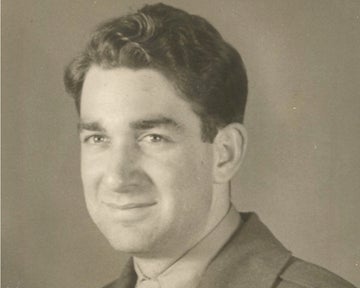Our veterans who served our country: Jack Jolley
Published 10:37 pm Thursday, March 26, 2015
By Robin Edgar
“We were all drafted. Willard, the eldest, left with the first group of draftees from Polk County in 1942. Paul went in 1943 and was the only one killed in action. I got my draft notice at 19, just before D-Day in 1944 and left home a few days later. Dad tried to get me to stay at home to help him work the farm, but I wanted to go because I was tired of being asked why I didn’t go. They drafted Glenn in 1945.
“From Fort Bragg, I did basic infantry replacement training in Camp Blanding, Fla. and then on to Fort Meade, Md. From there, I went to Camp Shanks in New York for 17 weeks of heavy weapons training. I was in the 311th (Timberwolf) Infantry Regiment in the 3rd Battalion Company M (Mike) of the 78th (Lightning) Division.
“We left from New York in a convoy of about 50 ships. On the way over, a submarine U-boat attacked us so we dropped depth charges that sounded like we were getting hit, the way the ship rattled from each explosion. Sometime during the night, we finally sunk the submarine, but we went through a bad storm in the North Sea before we got to South Hampton, England.
“As soon as we arrived, they put us on a train to Le Havre, France to fight in the Battle of the Bulge. We travelled in freight cars named “40 & 8s” because they could hold 40 men or eight horses. From Le Havre, we went through Holland and Belgium on the way to the front on the east side of Aachen, Germany, where we joined the 78th division.
“We were in combat just about all the time, sleeping in foxholes or cow sheds and then getting up the next morning to start fighting all over again; taking towns and areas in Germany until we reached the front line. One of my best friends from my basic training was killed a week after that. At one point, a big shell killed 23 of us and there were only four gunners of us left. We were told to stay 15 feet apart and the men on each side of me were killed, but I didn’t get a scratch.
“I became the number one gunner after that. We took a town called Schmidt to prevent the Germans from blowing more dam gates to flood the area, and then crossed the Roer River over to the Cologne Plains. Five days before we reached the Rhine River, a shell fragment hit my arm and I had to go back to the field station in Aachen and eventually to the 165th General Hospital in Cherbourg, France until my arm healed. Rejoining my company on the front line 10 days before the war was over, the last place I fought was Wuppertal, Germany.
“By that time, I was a sergeant and they sent me with other officers to Buchenwald Concentration camp to witness what the Germans did. They made the people who lived in the area go in there, too. We trained in Kassel to fight in Japan, but the Japanese surrendered, and, since I wasn’t married, I stayed in the Occupation Force and went to Northolt on the North Sea to guard radar equipment captured from Germans.”
Jolley received his discharge at Fort Dix, N.J. on May 1, 1946 and married Wilma Pack, his sweetheart from Mill Spring, a month later. They eventually had a son, Roger “Dayle.” Jolley worked with state highway engineers, becoming chief inspector on several interstate jobs, before he retired after 33 years. The Jolleys still live on 34 acres, five of which belong to the family’s first homestead on Fox Mountain Rd.
If you are a veteran and would you like to share about your experience in the US military, please contact Robin Edgar at 2robinedgar@gmail.com or call The Tryon Daily Bulletin at 828-859-9151.






